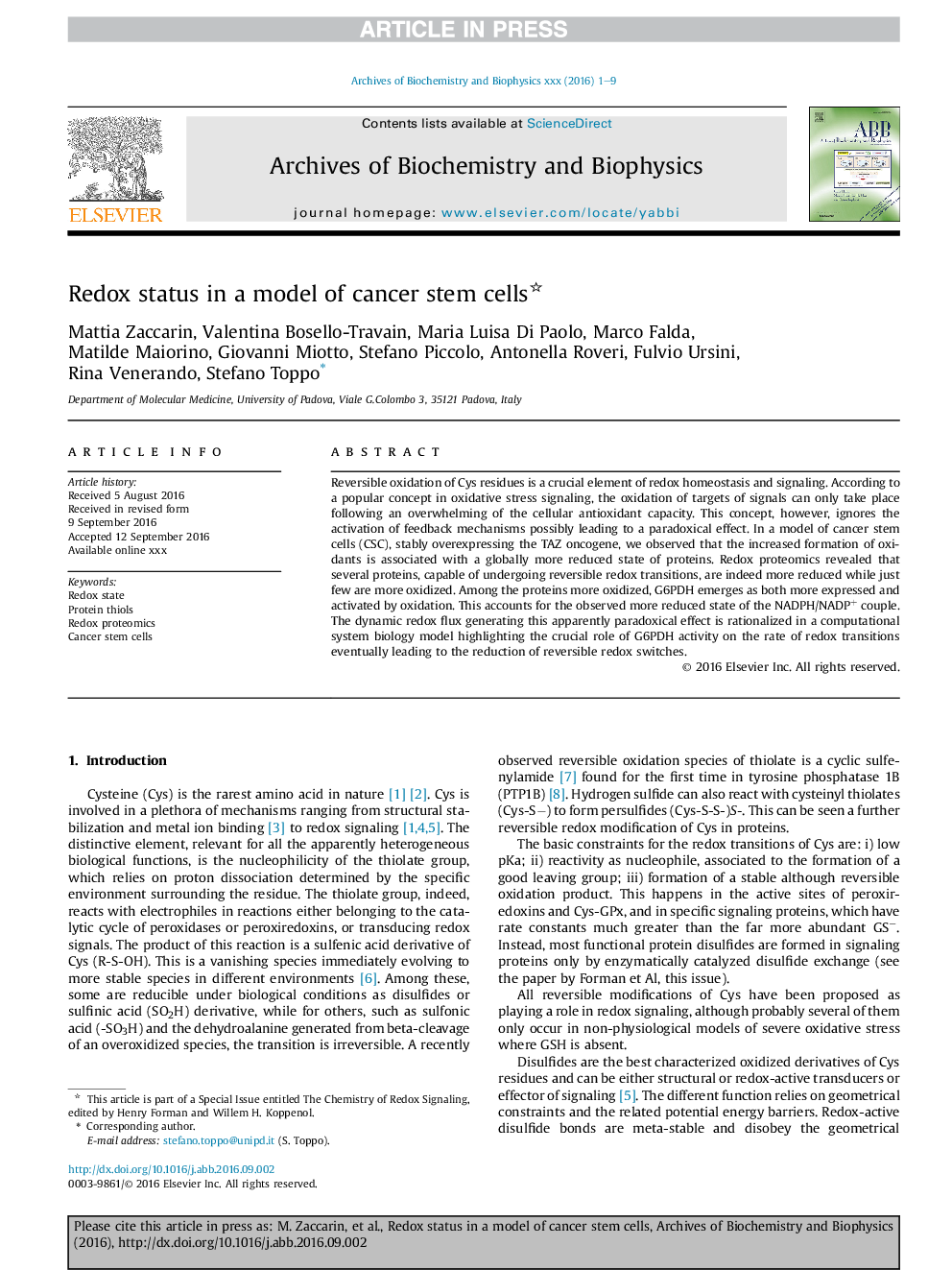| Article ID | Journal | Published Year | Pages | File Type |
|---|---|---|---|---|
| 5504446 | Archives of Biochemistry and Biophysics | 2017 | 9 Pages |
Abstract
Reversible oxidation of Cys residues is a crucial element of redox homeostasis and signaling. According to a popular concept in oxidative stress signaling, the oxidation of targets of signals can only take place following an overwhelming of the cellular antioxidant capacity. This concept, however, ignores the activation of feedback mechanisms possibly leading to a paradoxical effect. In a model of cancer stem cells (CSC), stably overexpressing the TAZ oncogene, we observed that the increased formation of oxidants is associated with a globally more reduced state of proteins. Redox proteomics revealed that several proteins, capable of undergoing reversible redox transitions, are indeed more reduced while just few are more oxidized. Among the proteins more oxidized, G6PDH emerges as both more expressed and activated by oxidation. This accounts for the observed more reduced state of the NADPH/NADP+ couple. The dynamic redox flux generating this apparently paradoxical effect is rationalized in a computational system biology model highlighting the crucial role of G6PDH activity on the rate of redox transitions eventually leading to the reduction of reversible redox switches.
Related Topics
Life Sciences
Biochemistry, Genetics and Molecular Biology
Biochemistry
Authors
Mattia Zaccarin, Valentina Bosello-Travain, Maria Luisa Di Paolo, Marco Falda, Matilde Maiorino, Giovanni Miotto, Stefano Piccolo, Antonella Roveri, Fulvio Ursini, Rina Venerando, Stefano Toppo,
